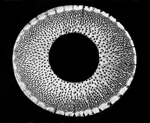
「修行尺八」歴史的証拠の研究 ホームページ
'Shugyō Shakuhachi' rekishi-teki shōko no kenkyū hōmupēji - zen-shakuhachi.dk
The "Ascetic Shakuhachi" Historical Evidence Research Web Pages
Introduction & Guide to the Documentation & Critical Study of Ascetic, Non-Dualistic Shakuhachi Culture, East & West:
Historical Chronology, Philology, Etymology, Vocabulary, Terminology, Concepts, Ideology, Iconology & Practices
By Torsten Mukuteki Olafsson •
トーステン
無穴笛
オーラフソン •
デンマーク • Denmark
|
2000: Tsukitani Tsuneko '(Hon)kyoku' Book, English Summary
尺八古典本曲の研究

Tsukitani Tsuneko: 'Shakuhachi Koten Honkyoku no Kenkyū', 2000. 





|
|